Dreams and meditation have long intrigued and fascinated mankind. The mysterious allure of dreams and the transformative power of meditation have captivated individuals across cultures and generations. Both dreams and meditation offer unique insights into our subconscious minds, providing a pathway to self-discovery, heightened awareness, and spiritual growth. This article will delve into the fascinating relationship between dreams and meditation, exploring how they can inform and enhance one another. We will uncover techniques to combine dreams and meditation, examine the benefits of synergizing these practices, and explore their practical applications in daily life. Join us on this captivating journey as we unravel the interplay between dreams and meditation and unlock their limitless potential.
The Power of Dreams
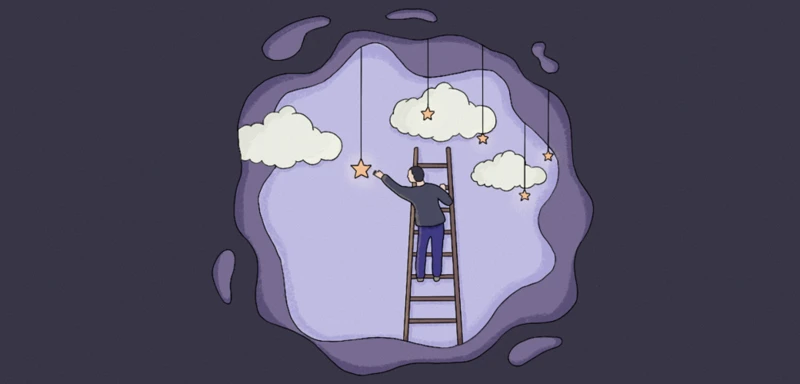
Dreams hold a profound power in our lives, serving as a gateway to our subconscious mind and offering a multitude of insights and experiences. Dreams as Reflection: They often reflect our innermost thoughts, desires, and emotions, providing a mirror into our deepest selves. When we pay attention to our dreams, we can uncover hidden patterns, unresolved conflicts, and unexpressed emotions that may be influencing our waking life. Dreams as Exploration: Dreams also have a remarkable ability to transport us beyond the boundaries of reality, allowing us to explore new worlds, encounter unfamiliar characters, and experience extraordinary events. These vivid dream experiences can ignite our imagination, spark creativity, and offer glimpses into unexplored aspects of our psyche. By understanding the power of dreams, we can start to harness their potential for personal growth, self-reflection, and self-expression. (Link: /symbolism-in-dreams-meditation/)
1. Dreams as Reflection
1. Dreams as Reflection: Dreams have the remarkable ability to serve as a reflection of our inner world. When we pay attention to our dreams, we gain access to a wealth of information about ourselves that may be hidden in our subconscious mind. Our dreams often symbolize our deepest thoughts, desires, fears, and unresolved conflicts. They provide a canvas for our unconscious mind to express itself and bring to light emotions and experiences that may be lingering beneath the surface. By analyzing the symbols, themes, and emotions present in our dreams, we can gain valuable insights into our own psyche. Dreams can reveal patterns and recurring themes that may be indicative of our beliefs, habits, and thought patterns in our waking life. They can shed light on unresolved issues or past traumas that may be affecting our emotional well-being. /meditation-dream-recall/ By practicing mindfulness and being present in the exploration of our dreams, we can begin to unravel the layers of meaning embedded within them. Reflecting on our dreams – their symbols, emotions, and narrative – allows us to better understand ourselves, our motivations, and the underlying forces shaping our thoughts and actions. The introspective nature of dreams as a reflection can promote personal growth, self-awareness, and self-acceptance. By delving into the depths of our dreams, we can unlock a deeper understanding of our true selves, paving the way for self-discovery and transformation.
2. Dreams as Exploration
Dreams as Exploration: Dreams have the incredible ability to serve as a gateway to new realms of exploration and adventure. When we dream, we are unbounded by the limitations of our physical reality, allowing our imagination to roam free. Within the realm of dreams, we can embark on fantastical journeys, meet intriguing characters, and experience events that defy the laws of nature. We may find ourselves soaring through the sky, delving deep into the ocean depths, or traversing distant galaxies. The dream world presents endless possibilities for exploration, encouraging us to break free from the constraints of our waking lives and tap into our innate sense of curiosity and wonder. Through dreams, we can uncover hidden truths about ourselves, challenge our beliefs and assumptions, and cultivate a sense of adventure in our subconscious mind. They provide us with a rich tapestry of experiences that can inspire and influence us in waking life. Exploring the world of dreams can lead to new insights, creative inspiration, and a deepening of our understanding of ourselves and the world around us. By embracing dreams as a platform for exploration, we open ourselves up to a world of limitless potential. (Link: /meditation-lucid-dreaming/)
The Essence of Meditation

Meditation is a practice that taps into the profound essence of our being, offering a pathway to inner calm, clarity, and self-realization. Meditation as Mindfulness: At its core, meditation involves cultivating a state of mindfulness, where we anchor our attention in the present moment and observe our thoughts, feelings, and sensations without judgment. By cultivating this awareness, we develop a deeper understanding of our thoughts and emotions, allowing us to navigate life with greater clarity and peace. Meditation as Insight: Additionally, meditation provides a gateway to profound insights and wisdom. As we settle into stillness and quiet the mental chatter, we can access an expanded state of consciousness, where intuitive guidance, fresh perspectives, and transformative realizations become available to us. This journey inward through meditation can unlock our true potential, enhance our overall well-being, and cultivate a sense of interconnectedness with the world around us.
1. Meditation as Mindfulness
Meditation as mindfulness involves cultivating a state of present moment awareness and nonjudgmental acceptance. This practice allows individuals to fully immerse themselves in the present experience, observing thoughts, sensations, and emotions without attachment or reactivity. By focusing attention on the breath, bodily sensations, or a chosen object of focus, individuals develop the ability to anchor their awareness in the present moment, heightening their sense of clarity and concentration. This heightened state of mindfulness achieved through meditation has profound implications for the exploration of dreams. As one becomes more skilled in maintaining mindfulness during meditation, this heightened state of awareness effortlessly carries over into dream states. This enables individuals to become aware that they are dreaming while in the midst of a dream, a phenomenon known as “lucid dreaming.” The practice of meditation as mindfulness primes the mind to recognize the subtle differences between waking reality and the dream world, thus enhancing the ability to maintain lucidity during a dream. (Link: /meditation-lucid-dreaming/)
2. Meditation as Insight
Meditation serves as a powerful tool for gaining insight into our thoughts, emotions, and inner workings of the mind. Meditation as Insight: Through regular practice, we can develop a heightened level of self-awareness and understanding. By observing our thoughts and feelings without judgment, we can begin to unravel the patterns and conditioning that shape our perception of reality. This process of insight meditation allows us to see the impermanent and ever-changing nature of our thoughts, emotions, and sensations. Deepening Self-Knowledge: As we cultivate a calm and focused state of mind through meditation, we gain a deeper understanding of our desires, fears, and attachments. We become aware of the habitual thought patterns that limit our growth and prevent us from fully experiencing the present moment. With this insight, we can make conscious choices and transform unhelpful thought patterns to live more authentically and purposefully. Expanding Awareness: Meditation also opens the door to a broader awareness beyond our individual selves. Through practices like loving-kindness meditation, we develop empathy, compassion, and a sense of interconnectedness with all beings. This expanded awareness enables us to see the world with greater clarity and understanding, fostering harmony within ourselves and in our relationships with others. The pursuit of insight through meditation is a profound journey of self-discovery and personal transformation, leading to a deeper connection with ourselves and the world around us. (Link: /meditation-insight/)
The Interplay Between Dreams and Meditation
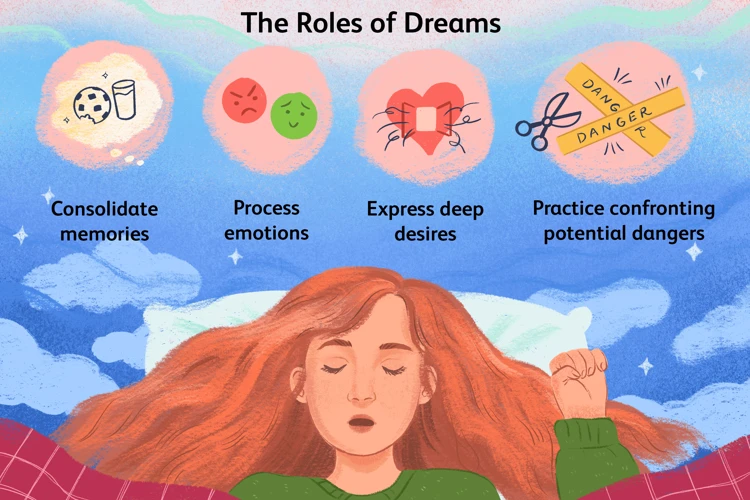
The interplay between dreams and meditation is a fascinating aspect of these two practices, revealing a profound connection between the subconscious and the conscious mind. Dreams Informing Meditation: Dreams can serve as a valuable source of insight and inspiration for our meditation practice. By paying attention to the symbols, themes, and emotions in our dreams, we can gain a deeper understanding of our subconscious desires, fears, and patterns of thinking. This knowledge can then be brought into our meditation, allowing us to explore and work through these aspects of ourselves on a conscious level. Meditation Enhancing Dream Recall: Conversely, meditation can enhance our ability to recall and analyze our dreams. By cultivating a state of mindfulness and presence through meditation, we become more attuned to the subtle messages and symbols presented in our dreams, improving our dream recall and making it easier to engage in reflection and interpretation. This reciprocal relationship between dreams and meditation creates a powerful synergy, enabling us to dive deeper into our subconscious realms and access greater self-awareness.
1. Dreams Informing Meditation
Dreams Informing Meditation: Dreams can serve as valuable teachers and guides in our meditation practice. When we pay attention to our dreams and explore their symbolism and messages, we can gain deeper insights into our subconscious mind. Dreams can bring to light unresolved emotions, fears, and desires that may be influencing our thoughts and behaviors in waking life. By analyzing our dreams, we can identify areas of personal growth, areas where we may need healing, and aspects of our lives that may require attention. These insights can then be brought into our meditation practice, allowing us to cultivate self-awareness, mindfulness, and inner peace. Dreams can act as powerful reminders of our inner world and the areas of our lives that may need further exploration and healing. By integrating the wisdom of our dreams into our meditation practice, we can embark on a journey of self-discovery and transformation. (Link: /meditation-dream-recall/)
2. Meditation Enhancing Dream Recall
Meditation has been found to enhance dream recall, allowing individuals to remember and engage with their dreams more vividly. This phenomenon can be attributed to the positive impact of meditation on memory, mindfulness, and overall cognitive function. When we practice meditation regularly, we cultivate a state of heightened awareness and attentiveness, both during waking life and in our dream states. This increased mindfulness carries over into our sleep, enabling us to become more conscious and lucid within our dreams. Through meditation, we develop the ability to observe and remember our dreams with greater clarity, making it easier to recall the details upon waking. Additionally, meditation fosters a deeper connection with our subconscious mind, facilitating a stronger bridge between the dream world and our conscious awareness. This heightened sense of self-awareness allows us to delve deeper into the meanings and symbolism within our dreams, unlocking valuable insights and personal growth. By integrating meditation into our daily practice, we can enhance our dream recall, tapping into a rich source of wisdom and exploration within our own minds.
Techniques to Combine Dreams and Meditation
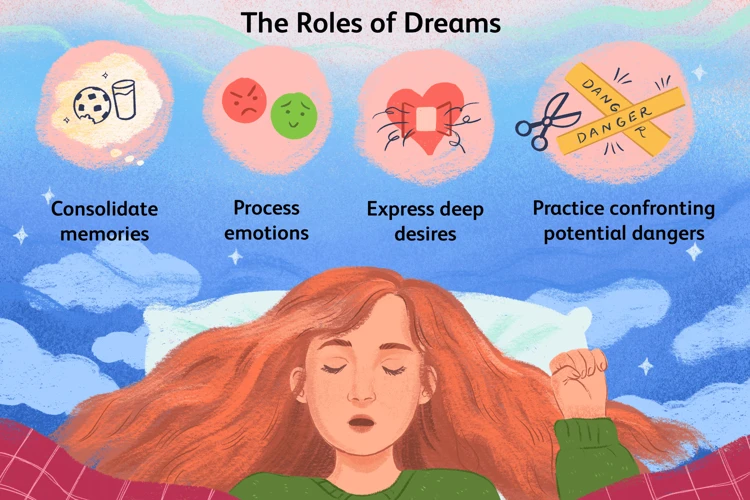
Combining dreams and meditation can lead to profound experiences and inner growth. Here are two powerful techniques to integrate these practices:Dream Journaling and Meditation: Keep a dream journal by your bedside to capture your dreams as soon as you wake up. Then, during your meditation practice, take a few moments to reflect on the dream symbols, themes, and emotions. This helps enhance your dream recall and allows for deeper self-reflection. Lucid Dreaming through Meditation: Through regular meditation, you can cultivate heightened awareness and cognitive control, which can extend to your dream state. By practicing mindfulness throughout the day and setting the intention to become lucid in your dreams, you may eventually experience the exhilarating state of lucid dreaming, where you are fully aware and able to consciously navigate and shape your dreams. These techniques offer a powerful synergy between dreams and meditation, offering opportunities for self-discovery and limitless exploration. (Link: /meditation-lucid-dreaming/)
1. Dream Journaling and Meditation
Dream journaling and meditation are powerful practices that can be combined to deepen our understanding of dreams and cultivate mindfulness in our daily lives. Dream Journaling: Keeping a dream journal involves writing down our dreams immediately upon waking. By capturing the details of our dreams, we can preserve their essence and gain insights into our subconscious mind. This process helps us remember dreams more vividly and recognize recurring themes or symbols. Reviewing our dream journal over time can reveal patterns and connections between our dreams and waking life experiences. Meditation: Meditation is a practice of cultivating present-moment awareness and inner stillness. By incorporating meditation into our daily routine, we can develop a greater sense of mindfulness, which can spill over into our dream state. During meditation, we can focus on quieting the mind, observing thoughts without attachment, and developing a non-judgmental mindset. This mental clarity and equanimity can enhance our ability to be present and aware while dreaming. Combining dream journaling and meditation, we can strengthen our dream recall, notice subtle details, and develop a deeper understanding of the messages and symbols present in our dreams. Practicing meditation before bedtime can also promote relaxation and a calm mental state, facilitating a peaceful sleep and potentially leading to more vivid and insightful dreams. (Link: /meditation-dream-recall/)
2. Lucid Dreaming through Meditation
Lucid dreaming, the practice of becoming aware that you are dreaming while in the dream state, can be enhanced and facilitated through meditation. By incorporating meditation techniques into your daily practice, you can increase your chances of experiencing lucid dreams and gain more control over your dream experiences.
1. Meditation for Mindfulness: One way to use meditation to cultivate lucid dreaming is by developing mindfulness throughout your waking life. Regular meditation practice helps increase your overall awareness and attentiveness, making it more likely that you will recognize the dream state while you are asleep. By training your mind to be fully present and aware during meditation, you can carry this heightened state of consciousness into your dream world.
2. Reality Checks: Another technique to combine meditation and lucid dreaming is by incorporating reality checks into your meditation routine. During meditation, you can practice questioning the nature of your reality by asking yourself, “Am I dreaming or awake?” This habit of questioning will carry over into your dream state, making it more likely for you to recognize when you are dreaming and become lucid.
3. Visualization and Intention Setting: Visualization is a powerful tool that can be utilized during meditation to enhance lucid dreaming. By visualizing yourself becoming aware and in control during your dreams, you can plant the intention in your subconscious mind to recognize when you’re dreaming. Regularly setting this intention during meditation can help program your mind to be more receptive to the idea of lucid dreaming.
4. Meditation Before Sleep: Finally, practicing meditation before bed can promote relaxation, calmness, and a focused mind, setting the stage for lucid dreaming. By incorporating deep breathing exercises, body scans, or guided visualizations, you can create a peaceful and conducive mental state for entering the dream world.
Incorporating meditation techniques into your daily routine can significantly enhance your ability to have lucid dreams. By cultivating mindfulness, practicing reality checks, visualizing your dream experiences, and meditating before sleep, you can unlock the potential for lucid dreaming and embark on exhilarating adventures within your own dreaming mind. (Link: /meditation-lucid-dreaming/)
Benefits of Synergizing Dreams and Meditation
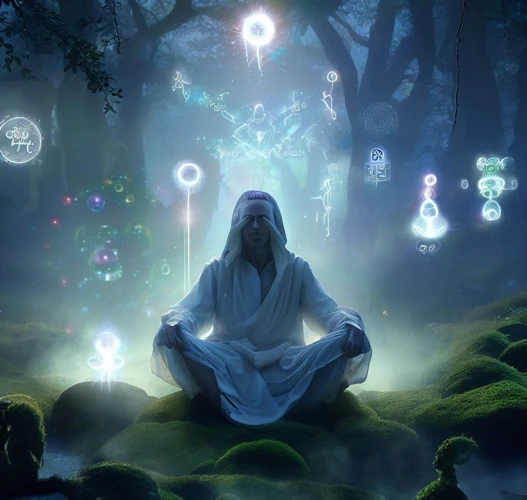
The synergistic combination of dreams and meditation holds numerous benefits for our overall well-being and spiritual evolution. Heightened Self-Awareness: By incorporating dreams into our meditation practice, we can cultivate a deeper sense of self-awareness. Dreams can act as valuable tools for self-reflection, helping us uncover hidden aspects of our personality, desires, and fears. When we analyze the symbols and themes in our dreams during meditation, we gain insights into our subconscious mind and develop a greater understanding of ourselves. Spiritual Growth and Insight: The integration of dreams and meditation can also lead to profound spiritual growth and insight. Dreams are known to connect us with our higher self, the collective unconscious, and the divine realm. When we meditate on our dreams, we tap into this spiritual dimension, accessing wisdom, guidance, and inspiration. This combination amplifies our spiritual practice, deepens our connection to the universe, and opens new avenues for personal transformation. As we synergize dreams and meditation, we embark on a transformative journey towards self-discovery, expanded consciousness, and spiritual enlightenment.
1. Heightened Self-Awareness
Heightened self-awareness is one of the primary benefits that arise from the synergy of dreams and meditation. When we engage in meditation, we cultivate a deep sense of mindfulness, directing our attention to our thoughts, emotions, and bodily sensations in the present moment. This state of mindfulness extends beyond our meditation practice and spills over into our dream experiences. By developing a consistent meditation practice, we become more attuned to the subtleties of our dreams, allowing us to observe, analyze, and reflect upon them with greater clarity and insight.
Dreams serve as a doorway to the unconscious mind, revealing aspects of ourselves that may be hidden or repressed in our waking life. Through meditation, we can develop the ability to observe our dreams without judgment or attachment, allowing us to gain valuable self-awareness and understanding. As we explore our dreams with a mindful and non-reactive attitude, we may uncover recurring themes, symbols, or emotions that offer profound insights into our subconscious desires, fears, and unresolved issues.
The heightened self-awareness gained from combining dreams and meditation allows us to bridge the gap between our conscious and unconscious selves. We become more attuned to our inner world, gaining a deeper understanding of our thoughts, emotions, and behaviors. This increased self-awareness opens the door to personal growth, as we are empowered to make conscious choices and take deliberate actions to align our lives with our authentic selves.
In addition to self-awareness, the synergy between dreams and meditation also contributes to heightened emotional intelligence. Through the exploration of dreams, we can uncover emotional patterns and triggers that may impact our waking life relationships and interactions. By practicing meditation, we develop the capacity to observe and regulate our emotions, enhancing our ability to navigate challenging situations and cultivate harmonious connections with others.
In essence, the combination of dreams and meditation offers a transformative journey of self-discovery, leading to heightened self-awareness and emotional intelligence. By engaging in these practices, we embark on a path of personal growth, expanding our understanding of ourselves and the world around us.
2. Spiritual Growth and Insight
Spiritual growth and insight are profound benefits that arise from synergizing dreams and meditation. 2. Spiritual Growth: When we combine the wisdom of our dreams with the practice of meditation, we open ourselves to a deeper understanding of our spiritual journey. Dreams can provide symbolic messages, archetypal imagery, and spiritual encounters that connect us to our higher selves and the divine. By bringing these dream experiences into our meditation practice, we can explore their deeper meanings, gain spiritual insights, and cultivate a greater sense of purpose and interconnectedness. 2. Insight: Dreaming and meditation both have the power to illuminate the hidden aspects of our being and bring forth valuable insights into our lives. Through dreams, we may receive guidance, clarity, and intuitive messages that can shape our decisions and actions. Meditation, on the other hand, allows us to quiet the mind, tune into our inner wisdom, and access profound insights beyond the limitations of the ego. By integrating dreams and meditation, we create a harmonious synergy that enhances our ability to receive and integrate spiritual insights into our daily lives, leading to personal transformation and spiritual growth.
Applying Dreams and Meditation in Daily Life
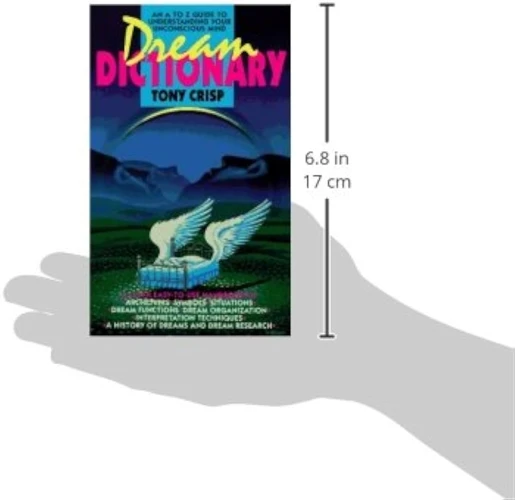
Applying dreams and meditation in our daily lives can be a transformative practice that brings about a deeper sense of self-awareness and fulfillment. Manifesting Dreams through Meditation: By combining the power of visualization and meditation, we can use our meditation practice to manifest our dreams and desires into reality. By vividly imagining and embodying our goals during meditation, we can cultivate the belief and intention needed to make them a reality. Meditation helps us align our thoughts, emotions, and actions with our deepest aspirations, creating a fertile ground for the manifestation of our dreams. Using Meditation to Guide Dreams: On the other hand, we can also utilize meditation as a tool to guide and shape our dream experiences. Through an intentional meditation practice before sleep, we can set intentions and plant seeds in our subconscious mind, directing the content and themes of our dreams. This allows us to explore specific aspects of our psyche, gain insights, and receive guidance from the wisdom of our dreams. By consciously applying dreams and meditation in our daily lives, we tap into their profound potential for personal growth, self-discovery, and transformation.
1. Manifesting Dreams through Meditation
Meditation has the extraordinary potential to manifest our dreams into reality. By combining the power of focused intention, visualization, and mindfulness, we can harness the energy of our dreams and bring them into fruition. Here are some techniques to manifest dreams through meditation:
- Meditation on Intentions: Begin by setting a clear intention for what you wish to manifest. Whether it’s a specific goal, a desired outcome, or a heartfelt dream, clearly define what you want to bring into your life. During meditation, focus your attention on this intention, visualizing it as if it has already been achieved. Feel the emotions associated with manifesting your dream and immerse yourself in the experience.
- Visualization Practices: Visualization is a powerful tool to amplify the manifestation process. During meditation, create vivid mental images of yourself living your dream. See yourself enjoying the success, experiencing the desired outcome, or living the life you envision. With each breath, allow these images to become more vibrant and alive, bringing your dream into greater focus.
- Mindfulness and Gratitude: Cultivating a sense of mindfulness and gratitude during meditation is crucial for manifesting dreams. As you focus on your intention and visualize your dream, consciously acknowledge and express gratitude for the present moment and the progress you have already made. This gratitude creates a positive energy that aligns with the manifestation process, attracting more of what you desire into your life.
By incorporating these techniques into your meditation practice, you can tap into the immense power of manifestation and align your energy with the realization of your dreams. Remember to approach this process with patience, trust, and consistency, allowing the universe to work its magic in divine timing. (Link: /meditation-dream-recall/)
2. Using Meditation to Guide Dreams
When we delve into the realm of dreams, it becomes evident that they are not only influenced by our waking experiences but can also be guided by our meditation practices. Meditation serves as a powerful tool in influencing and shaping the content of our dreams. By incorporating specific meditation techniques before sleep, we can set intentions and create a conducive environment for desired dream experiences. One such technique is visualization meditation, where we visualize specific dream scenarios or outcomes that we wish to explore during sleep. This practice allows us to plant seeds in our subconscious mind, giving directions to our dreamscape. Another technique is affirmation meditation, where we repeat positive and affirming statements that align with the dream experiences we desire. This helps in programming our subconscious mind and guiding our dreams towards desired goals or experiences. Mindfulness meditation can also be used to enhance dream awareness and clarity. By cultivating a state of present-moment awareness, we can carry this mindfulness into our dream state, enabling us to better recognize and navigate within our dreams. Through meditation, we can actively participate in the creation and manifestation of our dream experiences, transforming them into tools for personal growth, self-exploration, and spiritual development.
The Limitless Potential: Future Directions
The Limitless Potential: Future Directions
The exploration of the relationship between dreams and meditation has only scratched the surface of its potential. As we look to the future, there are numerous exciting avenues for further study and application. 1. Advancements in Dream and Meditation Technologies: With advancements in technology, we can anticipate the development of sophisticated tools that enhance our ability to explore and understand the interplay between dreams and meditation. This includes wearable devices that monitor brain activity during sleep, allowing us to track the effects of meditation on our dream patterns. Additionally, virtual reality and augmented reality applications could create immersive dreamscapes that can be used in combination with meditation practices for deep introspection and personal growth. 2. Integration of Neuroscience and Psychology: The interdisciplinary nature of dreams and meditation opens up opportunities for collaboration between neuroscience and psychology. By combining the study of brain activity and cognitive processes, researchers can gain a more comprehensive understanding of how meditation influences dream experiences and vice versa. This collaboration can lead to groundbreaking insights into the mechanisms underlying dreams and meditation, paving the way for more targeted and effective practices in the future. 3. Application in Mental Health and Wellness: Dreams and meditation can offer immense potential in the field of mental health and wellness. As we delve deeper into the relationship between dreams and meditation, we can explore their therapeutic applications. Dream therapy and meditation techniques may be used to address various mental health conditions, such as anxiety, depression, and trauma. Integrating dreams and meditation into wellness practices can promote overall well-being and lead to a more balanced and fulfilling life. The limitless potential of dreams and meditation in shaping our understanding of the mind, consciousness, and personal growth is only beginning to be uncovered. With further research, technological advancements, and the integration of diverse disciplines, the future of exploring the relationship between dreams and meditation holds immense promise in unlocking the mysteries of the human mind and unleashing its transformative power.
Conclusion
In conclusion, the relationship between dreams and meditation is a profound and transformative one. Throughout this article, we have explored the power of dreams as a reflection of our inner selves and as a gateway to exploration and creativity. We have also delved into the essence of meditation, understanding it as a practice of mindfulness and gaining insight. The interplay between dreams and meditation is fascinating, as dreams can inform and enhance our meditation practice, while meditation can improve dream recall. Techniques such as dream journaling and lucid dreaming through meditation offer practical ways to combine these two practices. The benefits of synergizing dreams and meditation are vast, including heightened self-awareness and spiritual growth. We can apply these practices in our daily lives by manifesting dreams through meditation and using meditation to guide our dreams. The limitless potential of dreams and meditation paves the way for future exploration and expansion of our consciousness. As we continue on our journey of self-discovery, let us embrace the power of dreams and meditation and unlock the profound wisdom they offer.
Frequently Asked Questions
1. Can meditation help improve dream recall?
Yes, meditation can enhance dream recall by improving overall mindfulness and awareness. When we practice meditation, we cultivate a state of present-moment attention, which can extend to our dream state. This increased mindfulness can lead to better dream recall and a deeper understanding of the messages and symbols within our dreams. (Link: /meditation-dream-recall/)
2. What is the role of symbolism in dreams and meditation?
Symbols in dreams and meditation often represent deeper meanings and can offer valuable insights into our subconscious mind. By exploring and interpreting these symbols, we can gain a deeper understanding of ourselves and our inner world. Symbols in dreams and meditation can vary greatly from person to person, making it important to develop our own personal symbol dictionary and awareness. (Link: /symbolism-in-dreams-meditation/)
3. How can combining dream journaling and meditation be beneficial?
Combining dream journaling with meditation can be highly beneficial. Dream journaling allows us to capture the details of our dreams, while meditation helps us access deeper meanings and insights. By incorporating meditation into our dream journaling practice, we can enhance our understanding of dream symbols, patterns, and themes, ultimately leading to greater self-awareness and personal growth.
4. Can meditation help induce lucid dreaming?
Yes, meditation can be a powerful tool for inducing lucid dreaming. By practicing mindfulness and cultivating awareness during waking life, we can carry these skills into the dream state. This allows us to recognize when we are dreaming and maintain conscious awareness, giving us the ability to actively participate and influence our dream experiences. (Link: /meditation-lucid-dreaming/)
5. Are there different meditation techniques for exploring dreams?
Yes, there are various meditation techniques that can aid in exploring dreams. Visualization meditation can help us access specific dream images, while mindfulness meditation can deepen our awareness of dream states. Additionally, mantra meditation and loving-kindness meditation can foster a positive and open mindset that is conducive to dream exploration. It’s important to find a technique that resonates with you and supports your dream exploration goals.
6. Can dreams provide guidance in meditation practice?
Yes, dreams can offer valuable guidance in our meditation practice. Dreams often reflect our inner thoughts, emotions, and desires, providing insight into areas of our life that may need attention or transformation. By paying attention to dream themes or symbols, we can bring these insights into our meditation practice, allowing for deeper self-exploration and personal development.
7. How can dreams and meditation contribute to spiritual growth?
Dreams and meditation both have the potential to contribute to spiritual growth. Dreams can offer glimpses into the spiritual realm, providing profound and transformative experiences. Meditation, on the other hand, helps us connect with our inner selves, the divine, or the universal consciousness. By combining dreams and meditation, we can tap into a deeper understanding of ourselves and the spiritual dimensions of existence.
8. Can meditation help manifest dreams into reality?
Yes, meditation can be a powerful tool for manifesting dreams into reality. By cultivating focus, clarity, and intention during meditation, we can align our energy and actions with our dreams and goals. This creates a powerful resonance that can attract opportunities, synchronicities, and the necessary resources to bring our dreams to fruition.
9. How can meditation and dreams enhance self-awareness?
Meditation and dreams both contribute to our self-awareness in unique ways. Meditation provides a direct experience of our thoughts, emotions, and sensations in the present moment. Dreams, on the other hand, offer a window into our subconscious mind and bring to light hidden aspects of ourselves. By integrating meditation and dream analysis, we can deepen our self-awareness and gain valuable insights into our thoughts, feelings, and behaviors.
10. Can combining dreams and meditation enhance problem-solving abilities?
Yes, combining dreams and meditation can enhance problem-solving abilities. Dreams can offer fresh perspectives, innovative ideas, and creative solutions to the challenges we face. By integrating meditation into our dream exploration, we can tap into our subconscious mind’s natural problem-solving abilities, leading to improved decision-making, clarity, and problem-solving skills.








